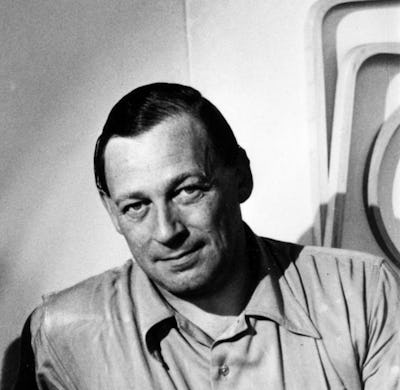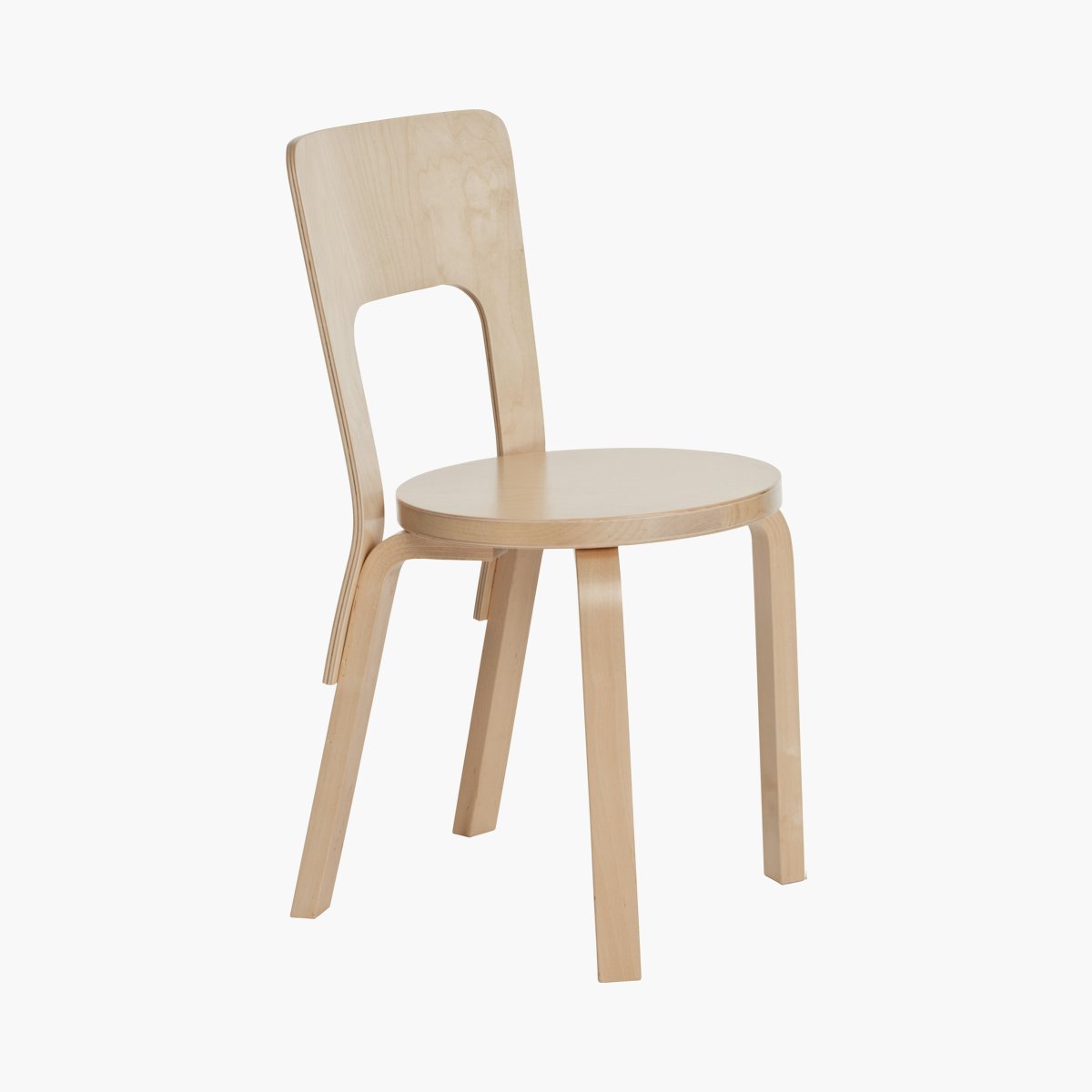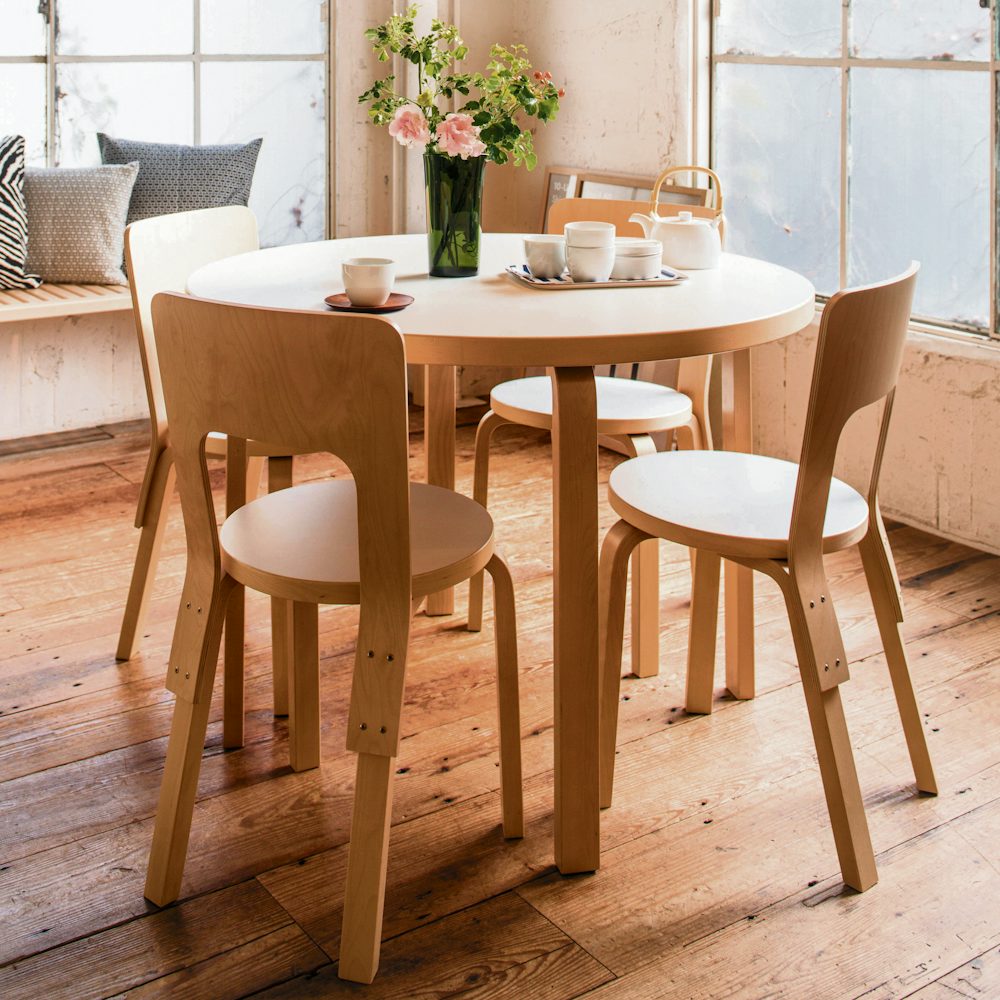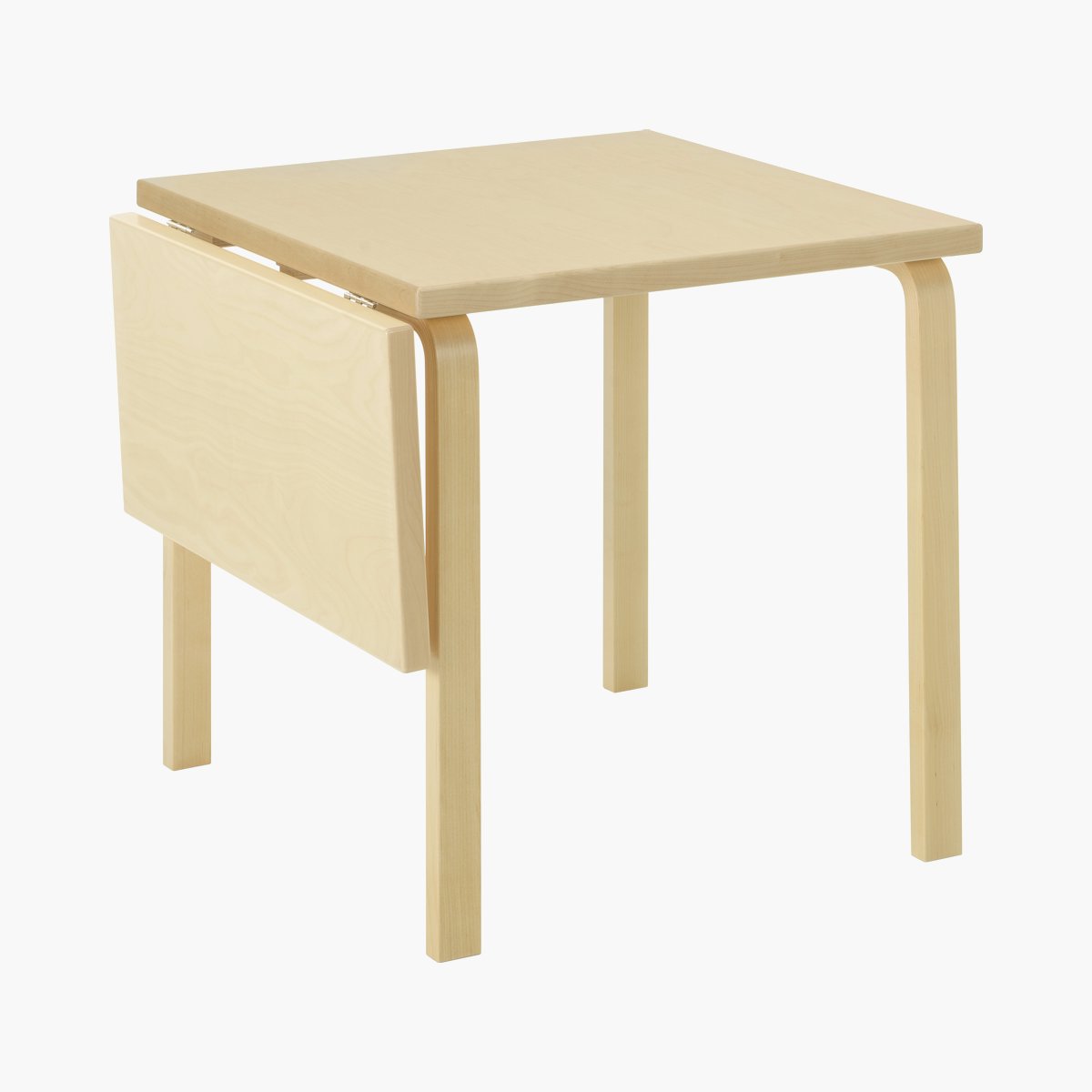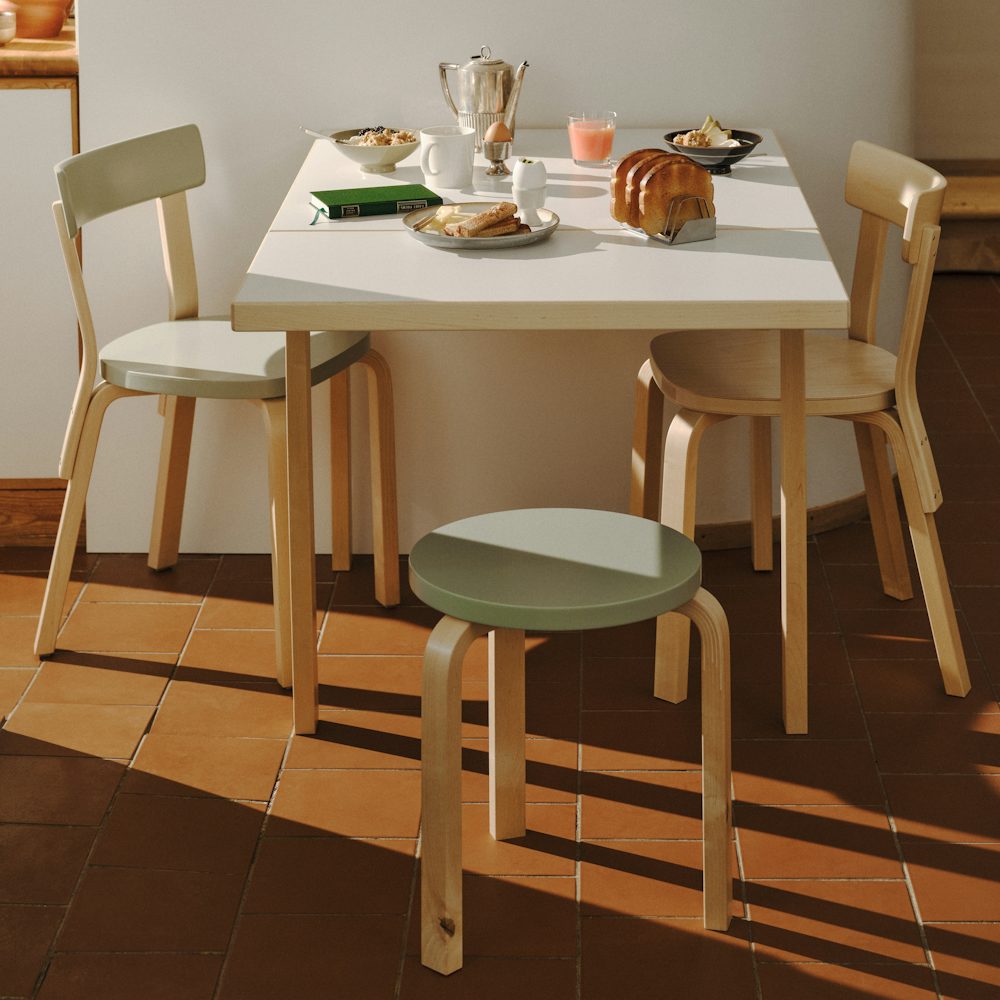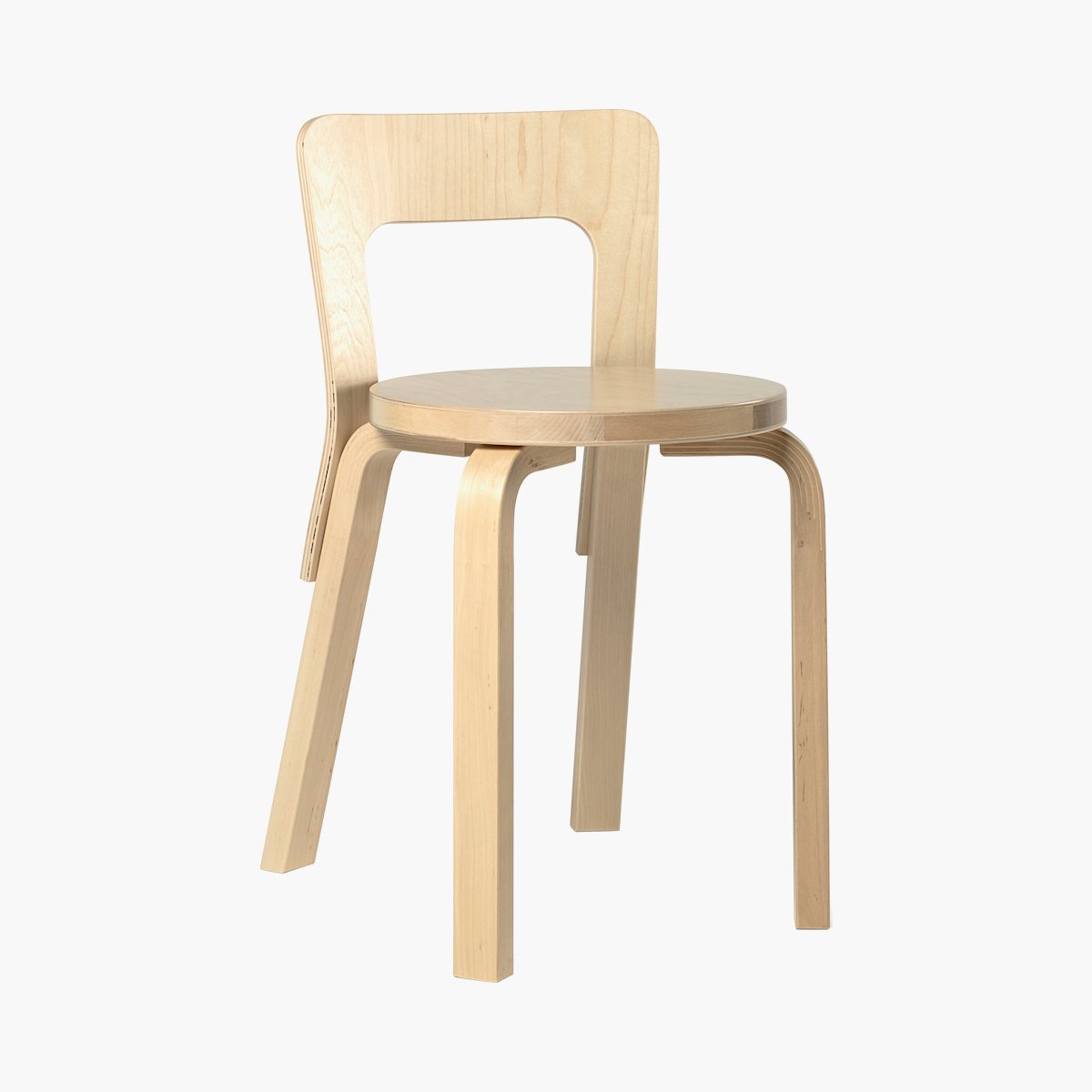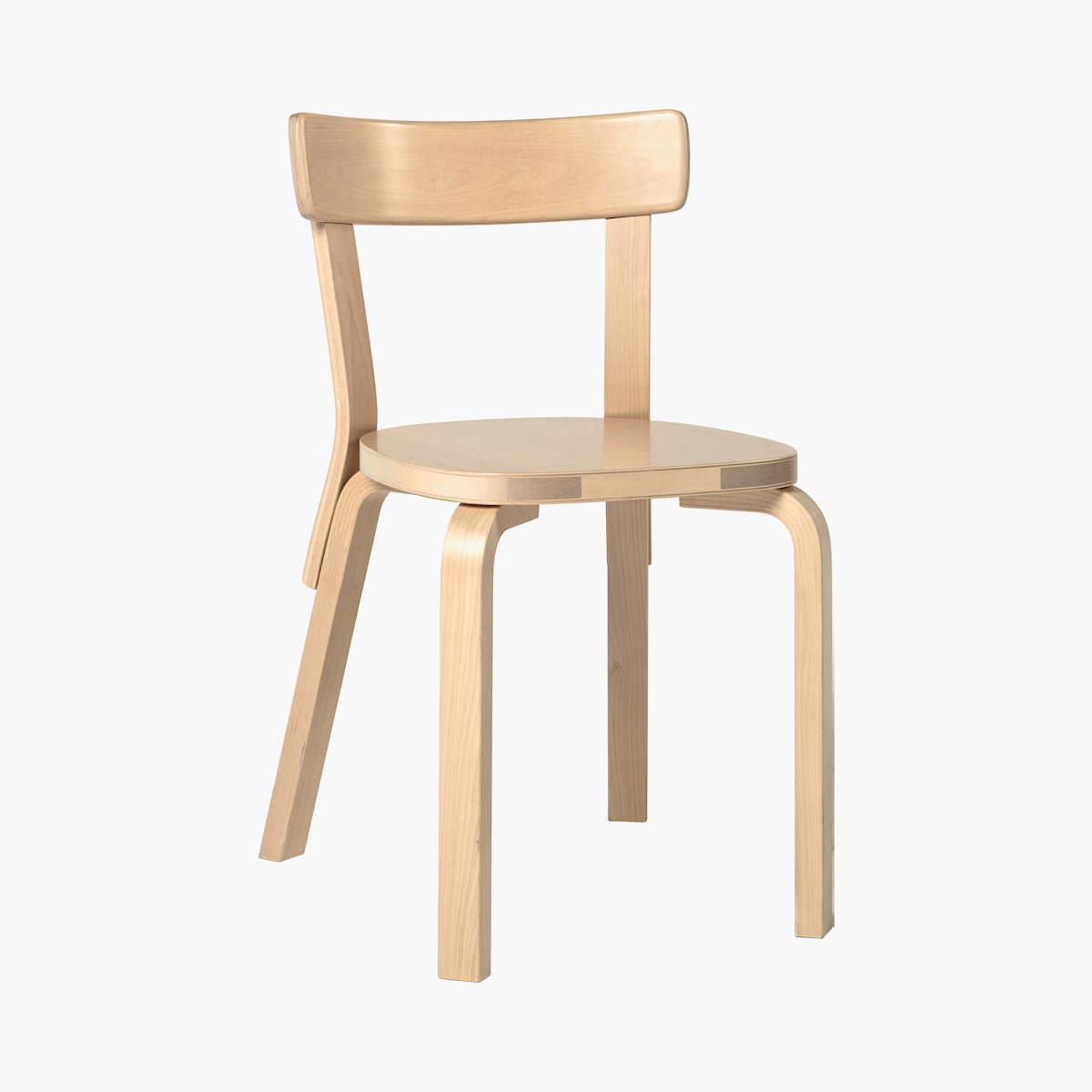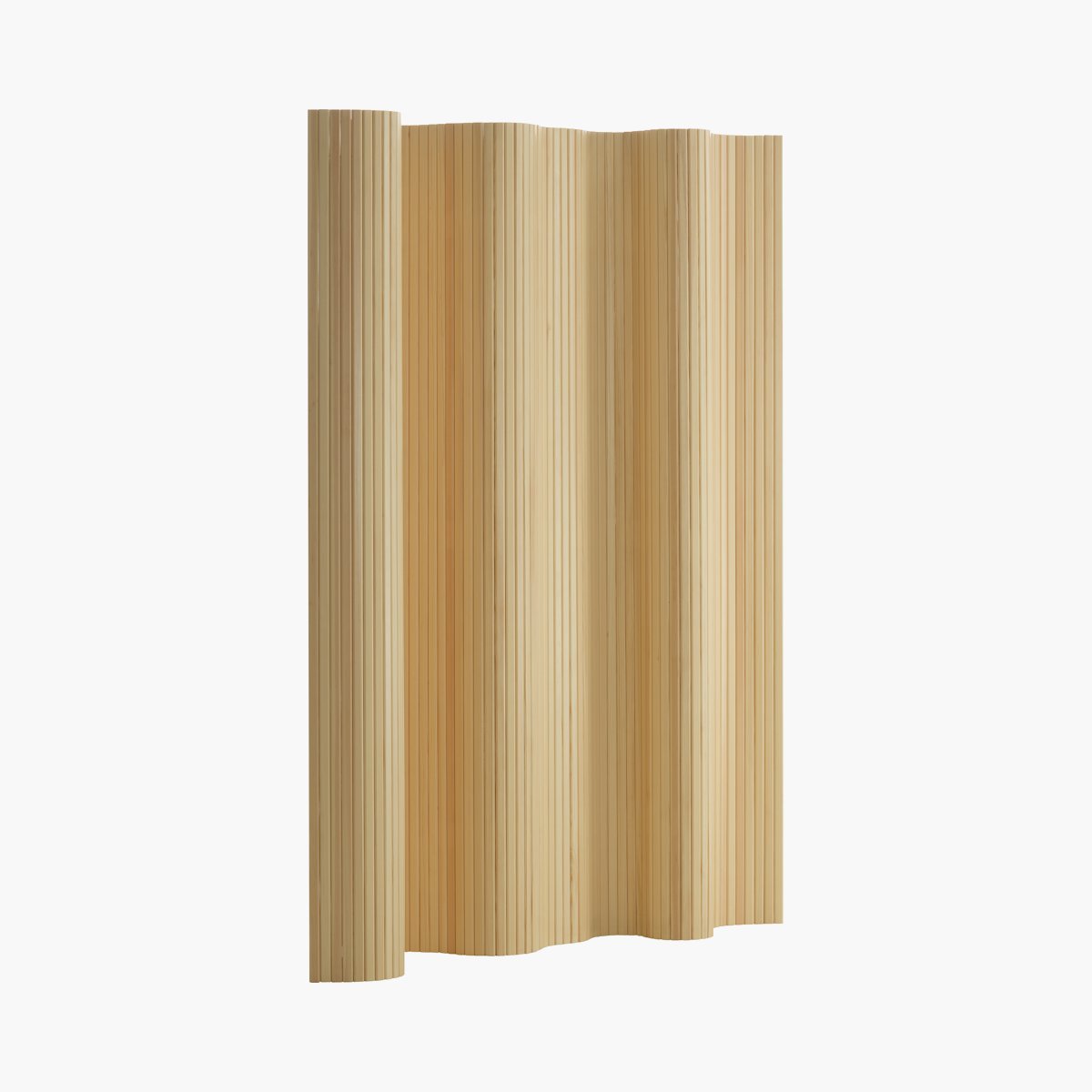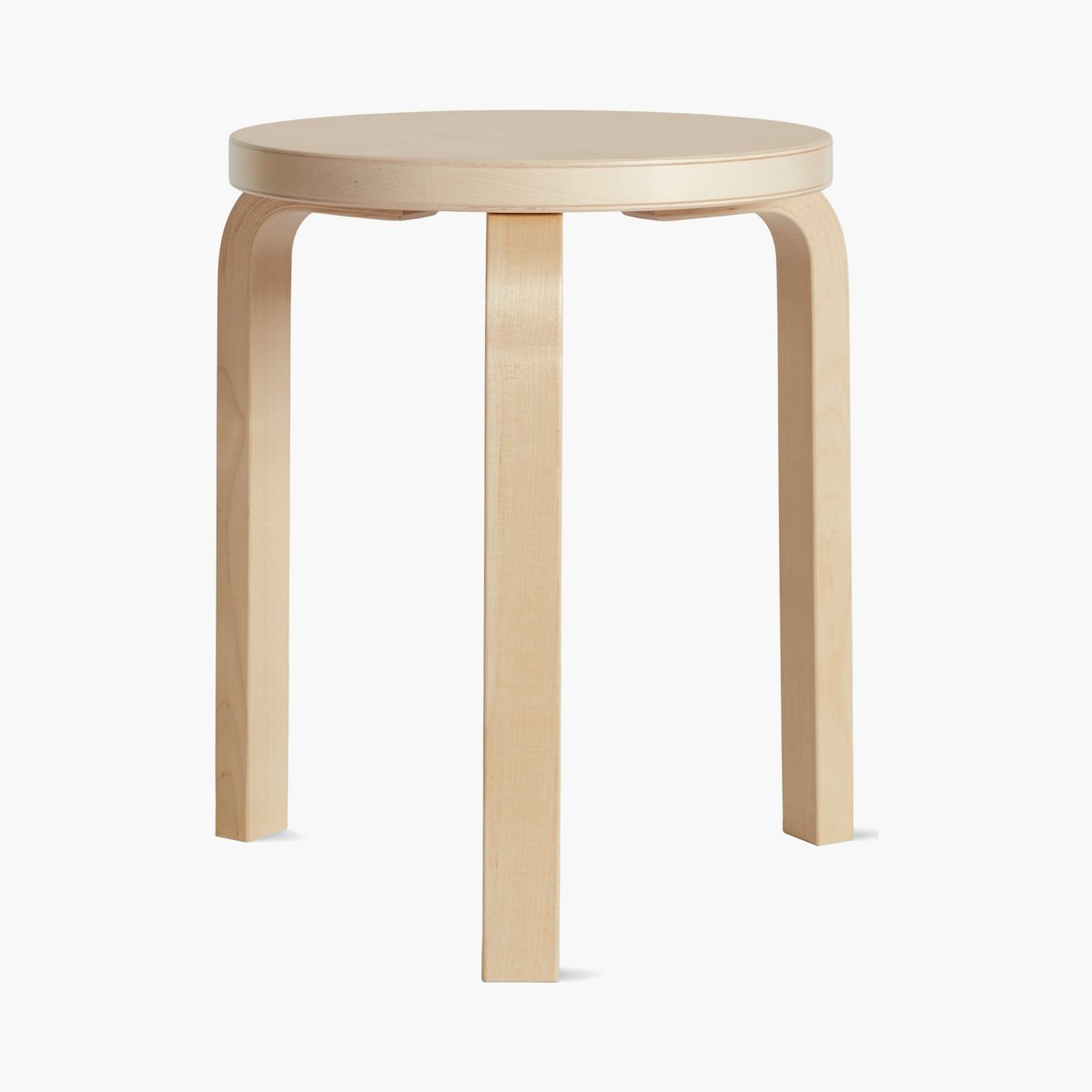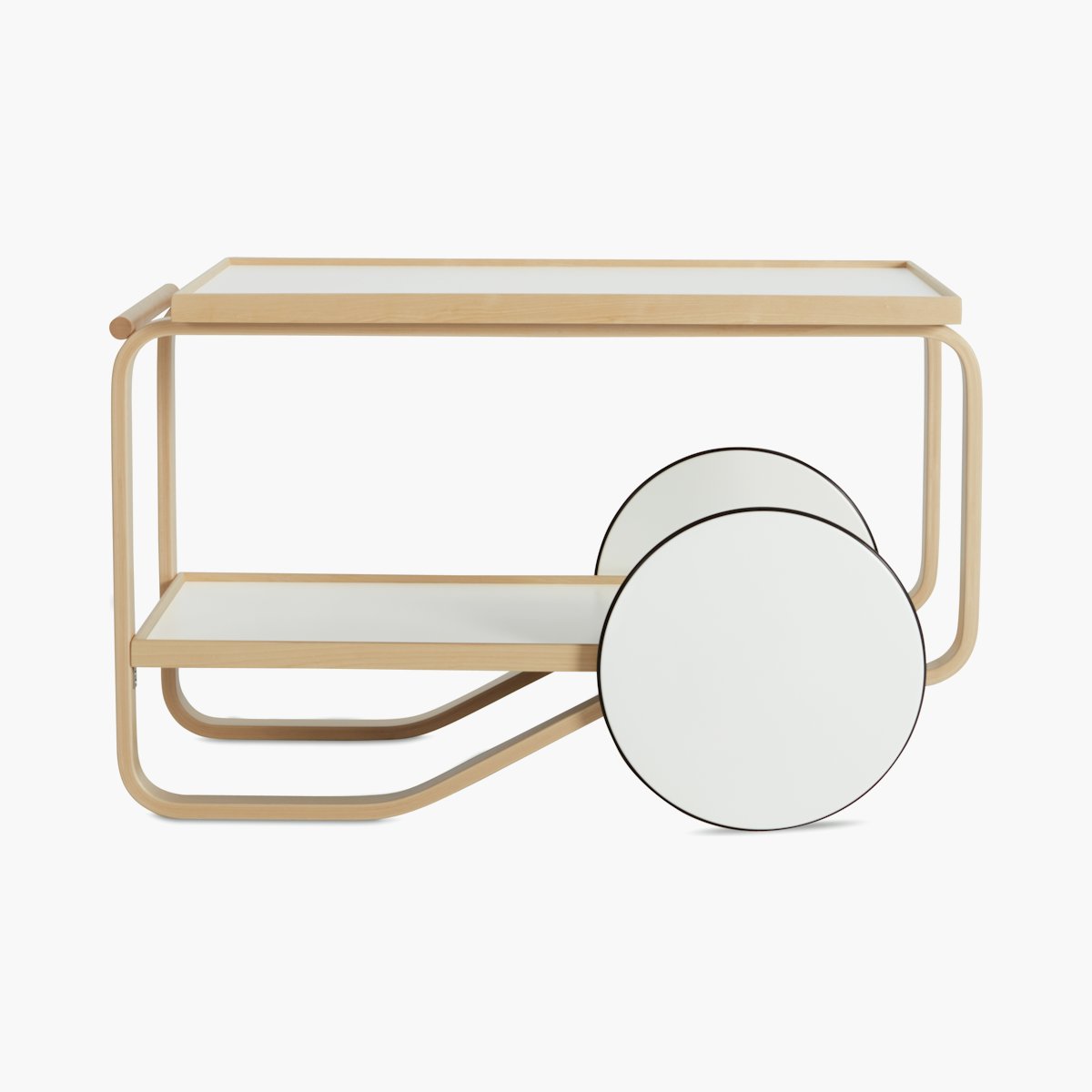“Architecture,” he said, “must have charm; it is a factor of beauty in society. But real beauty is not a conception of form... it is the result of harmony between several intrinsic factors, not the least, the social.” Aalto’s intention was to create integrated environments to be experienced through all the senses and to design furniture that would be at once modern, human and specifically Finnish.
Using native birch wood and plywood and his own new bentwood techniques, Aalto created his classic Lounge Chair, the curvilinear Wood Screen designed for the Finnish Pavilion and his iconic stacking stool. These pieces represent his virtuosity with form and structure and firmly established Aalto’s genius and fluency with wood, which he described as the “form-inspiring, deeply human material.” Their natural beauty also made waves among the European avant-garde, better known for high-minded austerity than for warmth.
Aalto’s work was enthusiastically received in the United States, and the Museum of Modern Art organized a major exhibition of his work in 1938. A year later, Aalto completed the Finnish Pavilion for the 1939 New York World’s Fair. Frank Lloyd Wright, upon viewing the Pavilion, said simply, “Aalto is a genius.”
As one of the founding fathers of modern design, Alvar Aalto had a profound influence on Charles and Ray Eames and George Nelson, designers who also combined formal concerns with humanistic ideals. We can thank Aalto not only for bentwood solutions like the L-leg and the Y-leg, but also for preserving the trace of the human hand and spirit in the beautiful materials and simple forms of modernism.
Using native birch wood and plywood and his own new bentwood techniques, Aalto created his classic Lounge Chair, the curvilinear Wood Screen designed for the Finnish Pavilion and his iconic stacking stool. These pieces represent his virtuosity with form and structure and firmly established Aalto’s genius and fluency with wood, which he described as the “form-inspiring, deeply human material.” Their natural beauty also made waves among the European avant-garde, better known for high-minded austerity than for warmth.
Aalto’s work was enthusiastically received in the United States, and the Museum of Modern Art organized a major exhibition of his work in 1938. A year later, Aalto completed the Finnish Pavilion for the 1939 New York World’s Fair. Frank Lloyd Wright, upon viewing the Pavilion, said simply, “Aalto is a genius.”
As one of the founding fathers of modern design, Alvar Aalto had a profound influence on Charles and Ray Eames and George Nelson, designers who also combined formal concerns with humanistic ideals. We can thank Aalto not only for bentwood solutions like the L-leg and the Y-leg, but also for preserving the trace of the human hand and spirit in the beautiful materials and simple forms of modernism.
8
Results
8
Results
View
